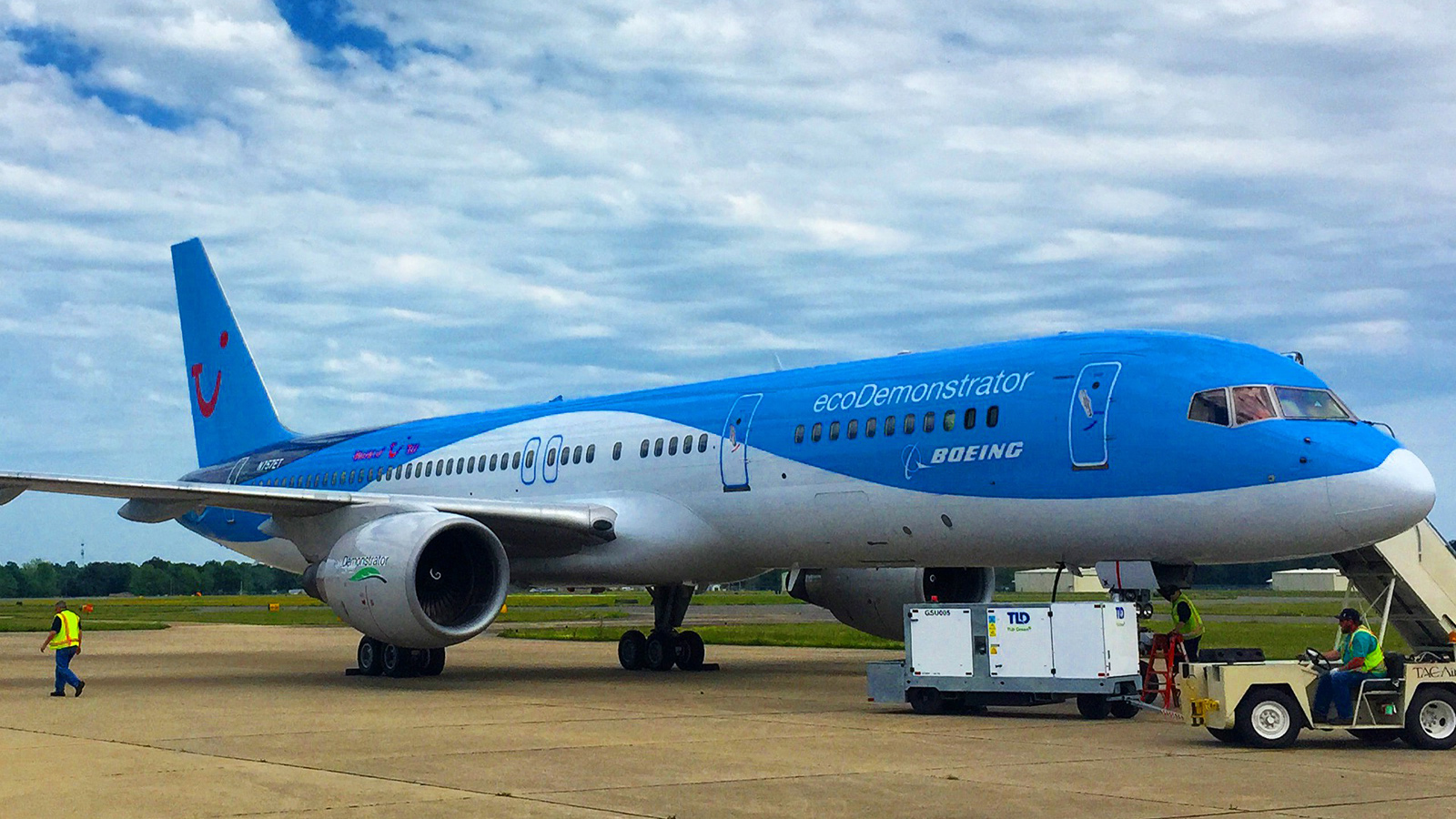Stay Up to Date
Submit your email address to receive the latest industry and Aerospace America news.
2019 test flights will test dozens of technologies, including those aimed at increasing airplane connectivity and reducing fuel consumption.
Boeing’s 2019 ecoDemonstrator will be a 787 airliner modified to test lightweight 3D-printed titanium parts, software and propulsion designs aimed at improving safety and reducing environmental impacts, the manager of the company’s ecoDemonstrator program told me.
The Boeing team in April completed flight and ground tests of the current ecoDemonstrator, a Boeing 777 borrowed from FedEx. The plane was modified to demonstrate 39 technologies, including a plant-based biofuel designed by Boeing and Brazil-based Embraer. The ecoDemonstrator team flies test planes with the biofuel whenever possible, so the plant fuel could be tested again in 2019.
The 777 was the fifth plane modified for ecoDemonstrator tests since the research program was announced in 2011 at the Farnborough Air Show in the United Kingdom. Boeing’s Doug Christensen, the ecoDemonstrator program manager, said his team has begun making plans a 787 to test “close to 60 technologies” starting in September 2019. The borrowed plane would be returned by the end of the year, although Boeing has not yet chosen a specific plane.
Christensen said his team wants to test “a lot of internet of things” technologies that could someday give air traffic managers more data about the flight path and how the plane is functioning.
An airplane is selected to be modified for ecoDemonstrator test flights each year based on technologies Boeing wants to test, so the 787 was chosen for 2019 “and likely 2020” because of the connectivity and flight controls built into the plane, he said. Boeing has not yet borrowed the plane.
Boeing also is in preliminary discussions with an engine supplier to test propulsion technologies, Christensen said.
The ecoDemonstrator team would like to include more lightweight materials and parts that are additively manufactured from recycled metals. Today, titanium shavings are recovered and formed into new, solid blocks of titanium that are then cut into new parts. This process saves money, but that recycling process does not reduce a plane’s weight enough to decrease fuel consumption, Christensen said. Greater weight savings would come from chopping up waste titanium and making it into a powder for 3D printing, also called additive manufacturing.
Titanium 3D printing “can almost print down to the molecule only where you need the structural support and nothing else, so it uses less materials with lighter weight” than is possible with conventional titanium cutting processes, he said.
Technologies being considered for the ecoDemonstrator in 2019 would follow up on related tests completed in April aimed at increasing airplane connectivity and reducing fuel consumption. The team flew the 777 with automatic dependent surveillance-broadcast electronics that broadcast and receive GPS coordinates for more precise flight tracking by air traffic managers, along with Airborne Collision Avoidance System-X software that takes data from that ADS-B network to warn pilots about midair collisions. The ecoDemonstrator also tested the ability to detect weather disturbances and turbulence ahead of the plane by emitting pulses of laser. This lidar (light detection and ranging) equipment was developed by Boeing and the Japan Aerospace Exploration Agency. A pilot also steered the 777 on a runway to see if a radar sensor on the wing and a camera on the vertical stabilizer could warn the pilot about potential ground collisions. A firetruck was driven in front of the plane during the ground collision experiment.
EcoDemonstrator planes are generally returned to their original condition at the end of testing and re-enter commercial service, as was the case with the FedEx Boeing 777. An exception was a 757 flown for the program in 2015. It was so heavily modified that it could not be returned to commercial service. After the flight tests, a team of technicians from Boeing and the Aircraft Fleet Recycling Association took apart the plane to determine how to best to reuse or recycle aircraft parts.
In the Wikipedia photo at the top of this story is the 757 aircraft used as a testbed in 2015.
About Tom Risen
As our staff reporter from 2017-2018, Tom covered breaking news and wrote features. He has reported for U.S. News & World Report, Slate and Atlantic Media.
Related Posts
Stay Up to Date
Submit your email address to receive the latest industry and Aerospace America news.




